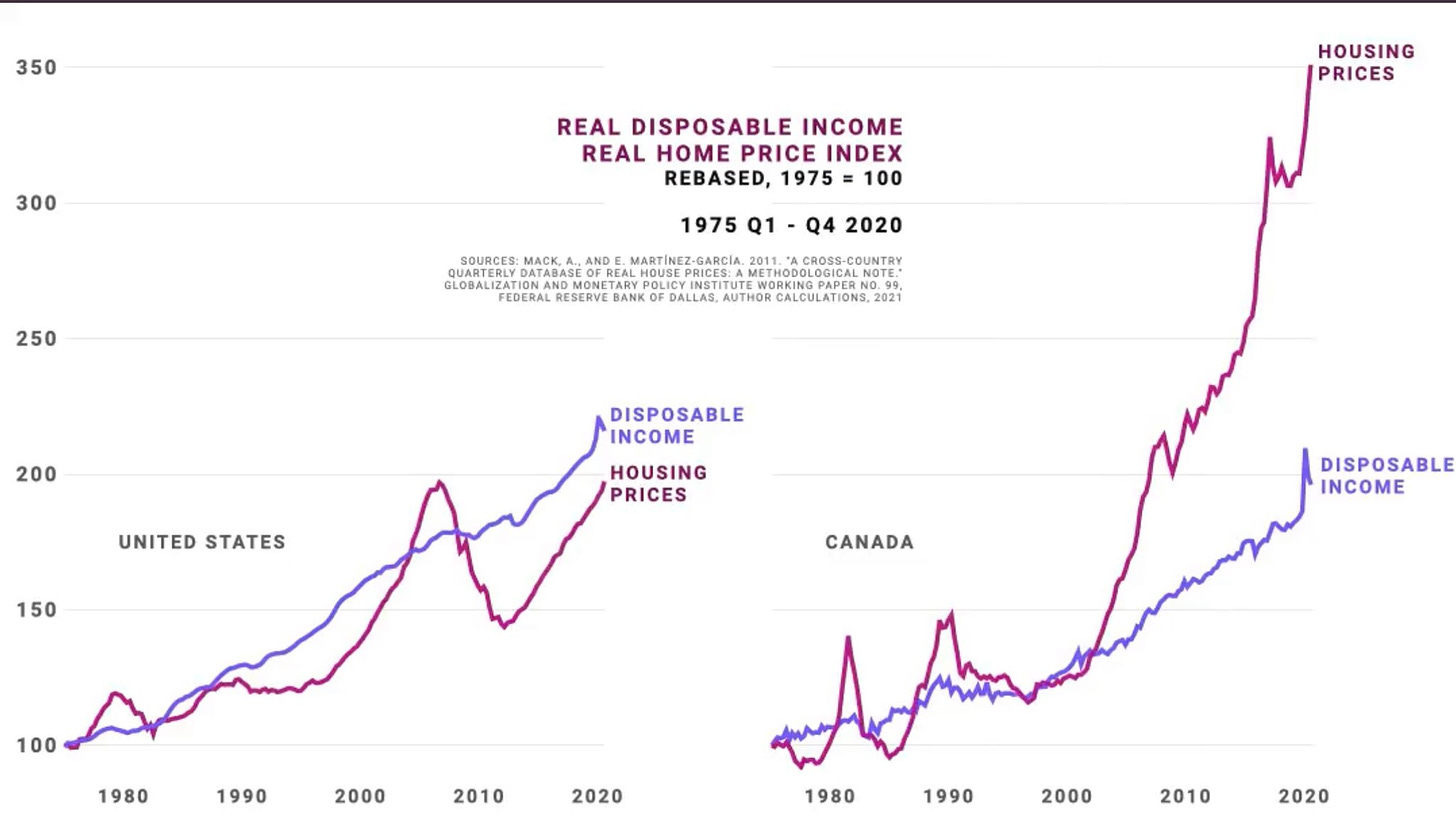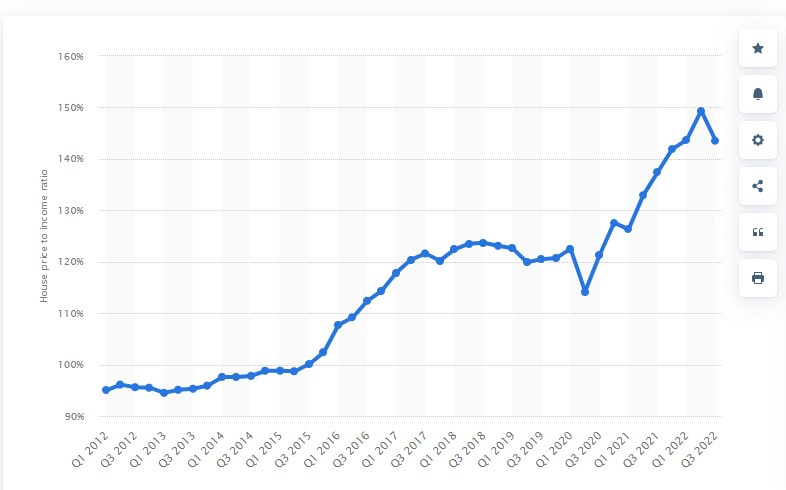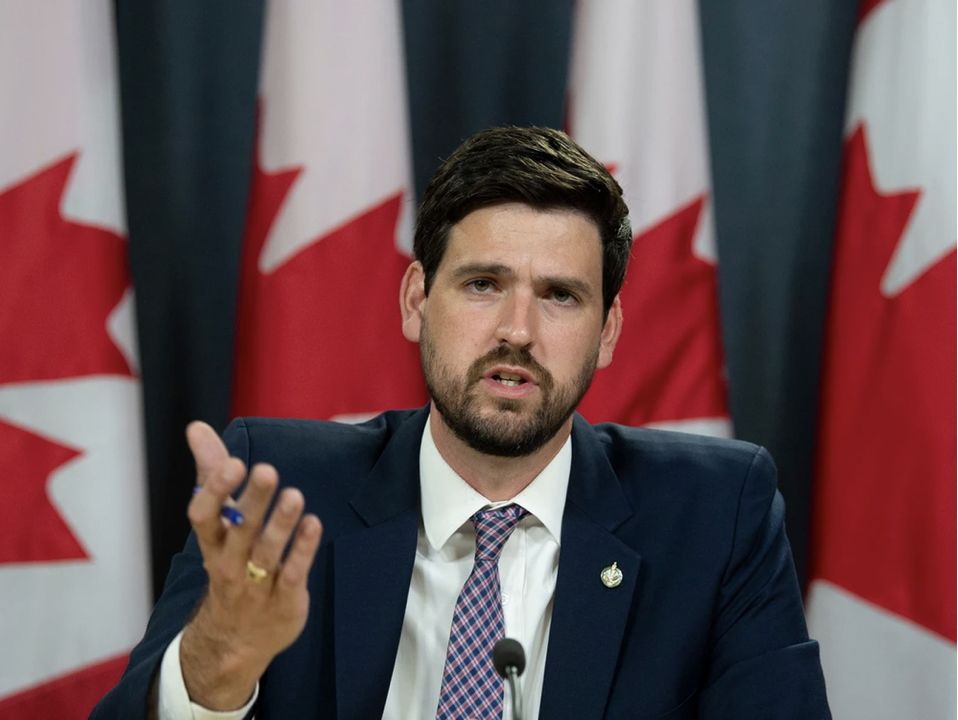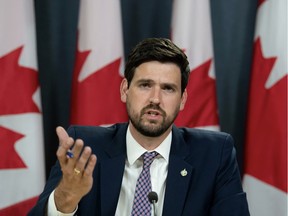'None of them are a good option'?
Happy Conservatives go conventioneering as Liberal 'luxury beliefs' fall out of favour. But what would a Poilievre government do in the real world?
SEP 7, 2023
Readers of this newsletter will be aware that I don’t regard contemporary “progressive” politics as genuinely progressive or Trudeau’s Liberals as particularly “liberal.” I’ve also spent a good bit of effort pointing out that in 2015 Team Trudeau came to power with a largely undisclosed “post-national” agenda that was occluded by the camouflage of what a lot of people call virtue-signalling, or use the term “woke” to describe.
A better term: “luxury beliefs.” It perfectly describes the weird thing that has displaced working-class politics on “the left,” and it neatly encapsulates the Trudeau Liberals’ governing principles too.
Advocating for defunding the police or promoting the belief we are not responsible for our actions are good ways of advertising membership of the elite. Why are affluent people more susceptible to luxury beliefs? They can afford it.
That’s from
Robert Henderson, author, Cambridge University doctoral student and faculty fellow at the University of Austin, a new institution that set out as an explicit rebellion against the enfeeblement of academia by what’s known as “woke” ideology. If I’m not mistaken, the term “luxury beliefs” was coined by Henderson. Smart guy, regardless.
Very generally I’ve come out of an old-school “left wing” view of the world, more or less, only to find myself in recent years far more comfortable in the company of conservatives, or people who consider themselves classic liberals. I expect it’s because of a shared revulsion for the post-truth sensibilities that dominate so much of “the discourse” these days.
I set this out as a preamble to the case that I’m not in the tank for the Conservatives, which my loudest detractors constantly allege about me. I’m not in the tank for Poilievre or for any party and I have no ideological commitments beyond what might be discerned in my convictions in the matter of universal human rights.
I’ve simply concluded that an honest assessment would give Poilievre credit for his laser focus on the concerns and anxieties of that constituency we used to call “ordinary Canadians,” which is to say most of us. Poilievre deserves credit for this because it’s exactly the sort of thing decent political leaders should do in a healthy liberal democracy.
Poilievre’s focus appears to have done him a world of good, besides. He now enjoys a very good shot at winning his party a majority government in the next federal election. That’s why his proposed remedies for what ails this country deserve very close scrutiny, rather than
hullabaloos about prayer rooms at the Conservative convention and that sort of thing.
I’ve been meaning to get to this for a while because I’ve written nothing of any consequence about Poilievre, for or against. After soaking up a lot of data these past few weeks I took an opening shot at it in my column in the National Post this week:
Voters need more than snappy slogans from the Conservatives: The party needs to work on substantial policies — especially on housing and immigration — to deliver Canadians from Liberal blunders.
Those “blunders” have been a great deal more destructive than most journalists have taken the time to notice, and a great many Canadians are finally coming to terms with the damage. Because they can’t afford not to. So what does Poilievre propose, exactly?
Long story short: What Poilievre has yet to demonstrate is a talent for policy, for effective remedies that will make an appreciable difference to the pall of gloom that eight years of Justin Trudeau’s sunny-ways landlordism has cast over the country. Which is the case I make in my column. Things are worse than Poilievre says, and worse is yet to come.
I’ll elaborate below the paywall.
Canadians warm to Polievre’s Conservatives, but only a little.
This morning’s Angus Reid polling shows that the implosion of support for the Trudeau Liberals that I refer to in my column is continuing, just as Conservatives are gathering to talk policy in Quebec City. At 39 percent, the CPC enjoys a 12-point advantage over the Liberal Party. Twice as many Canadians see Poilievre as the best prime minister as those Canadians who see Trudeau that way.
But only 18 percent of Canadians rate “taxes” as a particularly big concern, and only about 30 percent of would-be Conservate voters do, which is odd, given the close attention Poilievre pays to taxes (‘ll come to this later). Some of the Liberal base has bled away to Jagmeet Singh’s New Democrats, but the Conservatives are clearly reaping the windfall of the disaffection that has been growing across the country, in pretty well all demographic categories.
Making ends meet in Canada & the U.S. Something bad happened around 2015.

House prices to income ratio in Canada. There’s that 2015 point again:

Man does not live by bread alone. But bread would be nice, please.
It would be foolish to hive off “bread and butter” issues from all those things that can’t be so easily captured in charts and graphs. Ottawa no longer really knows how many people live and work in Canada or how many people are coming to Canada annually, for instance. And Ottawa doesn’t seem to want to know, as I describe in my column.
“Out of status” workers? Who knows, Ottawa says, officially: Could be 20,000, could be 500,000. CIBC analysts say it could be a million people are uncounted, mostly foreign students who haven’t bothered to leave or to fill out the easy forms encouraging them to stay.
The number of newcomers is already way, way higher than the 500,000 Ottawa says it wants by way of new citizens every year starting in 2025.
Last year Ottawa’s employer-friendly streamlining of the Temporary Foreign Workers Program, all by itself, brought in 220,000 people to work on farms and fish plants and of course in Amazon warehouses and Starbucks and McDonald’s. It’s so out of control that an independent United Nations human rights official is calling Canada
“a breeding ground for contemporary forms of slavery.”
The outsized influence the uberwealthy Beijing-aligned Mandarin bloc wields in Liberal power circles has a great deal to do with distortions in residential property values and weirdness in federal policy - at least as much as taxes, I’d reckon. The mobility of international capital makes luxury real estate
a dirty-money boltholefor transnational criminal operations, just as wealth migration contributes to sky-high home prices already bloated by speculators who have accelerated the conversion of housing stock into
the stuff of investment portfolios.
Remember the long-delayed and much-diluted foreign buyer ban Trudeau promised? It turned out
not to apply to foreign “students” whose daddies can buy condos for them, and it doesn’t apply to anyone in Canada with any kind of a work-allowed visa.
Canada’s housing market was already a grotesquely inflated mess when Trudeau’s Liberals were first elected eight years ago, and I know of no evidence for the notion that Stephen Harper’s taxes had much to do with that. Now, Canadians may well be sitting on the largest
housing bubble of all time. A lot of people have been making a fortune out of this obscenity. Like Vancouver-Granville Liberal MP Taleeb Noormohamed, for instance.
Noormohamed took over the Liberal banner in Vancouver-Granville after the demotion-resignation of Jody Wilson-Raybould, whose transgression was to stand for the rule of law against Team Trudeau’s backroom arm-twisting on behalf of SNC-Lavalin. Noormohamed has made a killing in the ponzi scheme Canada’s housing industry has become.
He bought and sold at least 42 properties between 2005 and 2021, holding most of them for less than a year.
He made $4.9 million for himself along the way.
Immigration “policy” is inextricably bound up in trade policy, which is systemically integrated with foreign policy, which is central to how Canadians understand their place in the world and how Canada measures up.
‘Just look at the growth in Canada’s GDP since Trudeau was elected! Higher than the G7 average!’ Okay, let’s have a look.
It’s a mirage. Population growth - last year Canada’s
knownpopulation grew faster than any year since 1957 - masks what’s been happening to Canada’s
realGDP, which, by the way, is now contracting.
And no, you can’t blame refugees for this. The Trudeau government has been scaling back refugee resettlement for years, and in any case the UN’s registered refugee population holds all the highly-educated, highly-skilled workers Canada could ever ask for.
You can’t blame taxes for this, either. And here’s where things get really interesting. It’s where Poilievre isn’t quite coming clean about the housing crisis. It’s not just about taxes.
‘If things are going so great, why is everything getting worse?’
I’m going to leave the hollering about carbon taxes for another day. There’s a lot to holler about, but the malaise that Poilievre has so astutely and properly tapped into is ultimately the result of a sort of cognitive dissonance. For a growing number of Canadians, it’s eating away at their sense of belonging, in their own country: ‘If things are humming along so swimmingly, why am I poorer, why is my city more dangerous and more expensive and more on edge? Why doesn’t anything seem to work anymore? And where are all these homeless people coming from?’
A sense of belonging, so necessary for social cohesion in a democracy, has been consistently undermined and “problematized” by luxury beliefs encoded in the Trudeau doctrine: Canada was a racist, apartheid-riven genocidal colonial settler state run by transphobes and white supremacists until Justin came along and made everything better.
Okay, enough of that. Let’s roll everything back to what Poilievre proposes by way of a “housing policy.”
‘Fire Gatekeepers. Build Homes. Fast.’
You need to read my column to see why that’s little more than a jingle. You could also read what Poilievre himself says about his remedies,
here. To be perfectly fair there’s some really solid stuff in it. But he lathers it on quite a lot and avoids the tougher issues, bringing everything around to taxes and such like.
Let’s start with his first example: “In Vancouver, $644,000 of the total price on any given home is going to pay for government permits, zoning fees, and other bureaucratic costs.”
Wait, what?
Set aside for the moment that over the years Vancouver has tripled its housing stock while home prices have quadrupled, so building more residential units isn’t going to help. Permits, fees and taxes are certainly heaping an absurdly heavy load onto the rising cost of new housing construction. Housing analyst Ben Myers reckons that government fees on new housing have exploded by more than 1,000 percent since 2001 in Toronto, while inflation has driven up prices by 59 percent. And Vancouver is notorious for that sort of thing.
But where did Poilievre get his figure of $644,000 added to the price “on any given home” in Vancouver, from permits, fees and bureaucratic costs?
It comes from a C.D. Howe analysis, from five years ago, titled
Through the Roof: The High Cost of Barriers to Building New Housing in Canadian Municipalities.
The additional $644,000 wasn’t about government taxes or charges on the cost of building “any given home.” It was an analysis of he cost of building
a single-family house in Vancouver - the type of home that’s available only to buyers with at least a couple of million dollars to play around with, whose worries do not concern me. The $644,000 figure is what you get when you add onto the basic cost of building a home like that the costs attributable to zoning bylaws, water and sewer and road infrastructure, any community-amenity taxes and speculation taxes and any other such “extra” costs that would normally apply anywhere else in the developed world.
A similarly unhelpful illustration comes in the next sentence of Poilievre’s ‘Fire Gatekeepers. Build Homes. Fast’ regimen, also from Vancouver: “Senakw, a First Nation housing development with 6,000 homes, was held up by NIMBYs because they thought it was too dense and didn’t have adequate parking.”
Did this even happen?
An accurate accounting of the planned 11-tower Senakw development, to be squeezed into an old residential neighborhood at Vancouver’s Kitsilano Point, can be found in a report from the always-reliable Bob Mackin, here:
Vancouver city hall withholds Senakw transportation planning documents.
Only 1,200 of the 6,000 rental units are classified as “affordable,” and no “NIMBYs” have managed to hold up theproject. The local “NIMBY” neighborhood association supports the project wholeheartedly and just wanted to know how thousands of people were going to get through their streets in and out of the massive development every day in the absence of some kind of traffic plan.
For their trouble they were made to wait a year for city hall to get back to them with 179 pages of documents. All but six of those pages were completely blacked-out “for fear that disclosure would harm intergovernmental relations, and reveal Indigenous cultural heritage and traditional knowledge.”
For a more explicitly pro-development point of view, there’s this:
First Nations Projects To Play Significant Role in Reshaping Vancouver Real Estate. The Senakw project is one of four First Nation collaborations that promise to bring a total of 12,500 rental units to Vancouver: “Nevertheless, increase in migration flows will likely ensure that demand outstrips this new supply.”
So yes, by all means, it’s great that the Conservatives are concentrating on bread and butter issues. But you can’t deal with them in isolation, and voters shouldn’t allow Poilievre to get away with making things up or substituting Trudeau’s luxury beliefs with his own.
Poilievre is turning out to be a great communicator. He exhibits genuine empathy for Canadians who have been hurting and disoriented quite a lot in recent years. To focus on the Trudeau Liberals’ many blunders, their deliberate deceptions, their gross negligence and their incompetence - that’s easy work.
Poilievre clearly needs to work harder

 nationalpost.com
nationalpost.com















